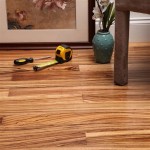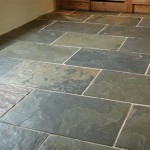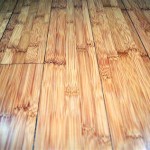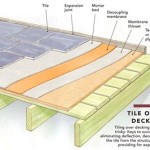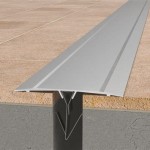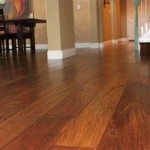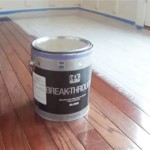Is Vinyl Plank Flooring Safe For Stairs In Georgia European Style Homes?
The question of whether vinyl plank flooring is a safe and suitable choice for stairs, particularly in Georgia homes designed with European architectural styles, is a complex one. A multifaceted assessment is needed that considers the material properties of vinyl plank, the specific construction and design of the stairs, relevant building codes and safety regulations, and aesthetic considerations pertinent to European style interiors.
Vinyl plank flooring has gained considerable popularity as a flooring material due to its durability, water resistance, ease of installation, and relatively lower cost compared to hardwood or tile. However, its application on stairs presents unique challenges that require careful consideration. Stairs are high-traffic areas susceptible to wear and tear and potential slip hazards. Therefore, choosing the right material and installation method is crucial for ensuring safety and longevity.
Understanding Vinyl Plank Flooring
Vinyl plank flooring, also known as luxury vinyl plank (LVP) or luxury vinyl tile (LVT), is a synthetic flooring material composed of multiple layers. These layers typically include a backing layer, a core layer (often made of PVC or WPC – wood plastic composite), a decorative print layer that mimics the appearance of wood, tile, or stone, and a wear layer. The wear layer is the uppermost protective layer that determines the flooring's resistance to scratches, stains, and general wear and tear. The thickness of the wear layer is a key factor in determining the durability and suitability of vinyl plank for high-traffic areas like stairs.
Different types of vinyl plank flooring exist, each with varying properties. Some are more rigid, while others are more flexible. Click-lock systems are common for floating installations, while glue-down options provide a more secure and permanent bond. The choice between these methods will depend on the specific application and the condition of the subfloor.
For stairs, selecting a vinyl plank with a thick wear layer (typically 20 mil or higher) is recommended to withstand the constant foot traffic. In addition, a textured surface can enhance slip resistance, which is particularly important for safety on staircases.
Stair Design and Construction in Georgia European Style Homes
Georgia homes often incorporate architectural elements inspired by European styles such as Georgian, Tudor, and French Provincial. These styles typically feature elegant details, rich textures, and sophisticated color palettes. When selecting flooring for stairs in these homes, it's essential to consider how the material will complement the overall aesthetic.
Stair design can vary significantly, from straight runs to curved or spiral designs. The complexity of the stair design will influence the installation process and the potential for safety concerns. For example, curved stairs may require more intricate cutting and fitting of the vinyl planks, which could compromise the integrity of the installation if not done correctly.
The subfloor beneath the stairs must be properly prepared before installing any flooring material. A level, stable, and clean subfloor is essential for ensuring a secure and long-lasting installation. Any imperfections in the subfloor can translate to unevenness or instability in the finished flooring, potentially creating safety hazards.
European style homes often feature solid wood staircases. Replacing the wood entirely is rarely done, opting for fitting vinyl planks over the existing wood structure. In these situations, ensuring the wood is in good condition, free from rot or structural damage is absolutely critical before any vinyl installation.
Safety Considerations and Building Codes
Stairs are a common area for falls, making safety a paramount concern when selecting flooring. Slip resistance, adequate lighting, and the presence of handrails are all crucial for preventing accidents. Building codes and safety regulations often specify minimum requirements for stair design and construction, including slip resistance and riser height uniformity.
The International Building Code (IBC) and the International Residential Code (IRC), which are widely adopted in the United States, contain specific provisions related to stair safety. These codes address issues such as riser height, tread depth, handrail height, and slip resistance. Local building codes in Georgia may have additional or more stringent requirements that must be followed.
The slip resistance of flooring materials is typically measured using a coefficient of friction (COF). A higher COF indicates greater slip resistance. For stairs, a COF of 0.5 or higher is generally recommended to minimize the risk of slips and falls. Vinyl plank flooring can be treated with slip-resistant coatings or finishes to enhance its COF, making it a safer option for stairs.
Proper installation is crucial for ensuring the safety and longevity of vinyl plank flooring on stairs. Improperly installed flooring can create tripping hazards, loose planks, and other safety concerns. Hiring a qualified and experienced flooring contractor is highly recommended to ensure that the installation is done correctly and in compliance with all applicable building codes and safety regulations.
The use of stair treads and risers specifically designed for vinyl plank flooring can greatly enhance both the safety and aesthetics of the installation. These components provide a secure and slip-resistant surface for each step, while also creating a cohesive and finished look. Stair treads typically have a bullnose edge for added safety and comfort.
Lighting is an often-overlooked aspect of stair safety. Adequate lighting is essential for illuminating the steps and making it easier to see potential hazards. Installing lights at the top and bottom of the staircase, as well as along the sides, can significantly improve visibility and reduce the risk of falls. Motion-sensor lights can also be a convenient and energy-efficient option.
Aesthetic Considerations for European Style Interiors
Maintaining a consistent aesthetic with the existing European style interior design is essential. Selecting a vinyl plank with a wood-look finish that complements the existing furniture, cabinetry, and trim can create a cohesive and harmonious look. The color and grain pattern of the vinyl plank should be carefully considered to ensure that it aligns with the overall design theme.
Vinyl plank flooring is available in a wide range of colors, textures, and patterns, allowing for a high degree of customization. Some manufacturers offer vinyl planks that accurately mimic the look of traditional hardwood flooring, including distressed finishes and hand-scraped textures. These options can be particularly well-suited for European style homes.
The installation pattern of the vinyl plank can also influence the overall aesthetic. A straight lay pattern is a classic and versatile option, while a staggered pattern can add visual interest and break up the monotony. Herringbone or chevron patterns can be more complex but can also create a more sophisticated and elegant look, often associated with European design.
Adding decorative stair rods can enhance the visual appeal of vinyl plank flooring on stairs while also providing an extra layer of security. Stair rods are typically made of metal and are installed across the width of each step, holding the treads in place. They can add a touch of elegance and sophistication to the staircase, complementing the European style interior.
The selection of baseboards and trim can also impact the overall aesthetic. Choosing baseboards and trim that match or complement the vinyl plank flooring can create a seamless and finished look. Consider using traditional trim profiles that are characteristic of European architecture, such as crown molding or chair rails, to enhance the authentic feel of the interior.
Rugs and runners are one of the best methods to ensure safety on stairs. Placing a runner down the center of the stairs, or individual rugs on each step, is an effective way to prevent slips and falls. These also add to the aesthetic of the staircase. Select rugs and runners with a non-slip backing to prevent them from sliding around.
Ultimately, determining whether vinyl plank flooring is safe for stairs in Georgia European style homes involves a comprehensive assessment of the material properties, stair design, building codes, safety regulations, and aesthetic considerations. By carefully considering these factors and working with qualified professionals, homeowners can make informed decisions that prioritize safety, durability, and design harmony.

Lvp Stair Treads Ideas

Lvp Stair Treads Style Types

Luxury Vinyl Plank Flooring Stair Treads

Lvp Stair Treads Durable Style For Modern Home

Matching Stair Treads

Herringbone Floor Visualizer See Your Layout Virtually

Ultimate Guide To The Best Vinyl Flooring For Your Space Lifestyle

Ultimate Guide To The Best Vinyl Flooring For Your Space Lifestyle

Luxury Vinyl Flooring Planks Msi Surfaces

Stair Treads For Spiral Staircase
See Also
